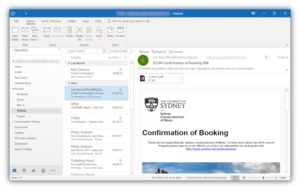From Desktop Search to Global Search
As more information is generated each year, and more platforms for distributing this information become available, the ability to successfully manage and search through each source of data from one desktop search solution becomes imperative.
Often, one piece of information can make or break a sales pitch, or greatly affect the way you move forward with a client, so, in business, you don’t really have the option to give up on your search. Being able to bridge the desktop, enterprise, web and social aspects of your business with a single desktop search solution would enable employees to access all relevant data, wherever it may be, whenever they need it.
A single desktop search interface may also enable access to data from sources outside of an enterprise – for example, Twitter indexes each and every tweet. If a desktop search program were able to access or mirror this information so it can be indexed, the user would be able to find any tweet, on any topic, by any person since Twitter was founded. Just think of the amount of incredibly important information hidden in this overwhelming mass of unorganized data.
The Downside of too Many Information Sources
Naturally, having access to so many data sources comes with some complications, which would explain why no software has yet successfully included each channel or source into one interface, although not for lack of trying.
One of the foremost issues currently stalling larger enterprises from migrating to cloud based or externally-managed servers is the issue of data security. An employee connecting their social media accounts to a workplace managed desktop search system will also bring up similar concerns. How will private and business data be managed? Who has access to what information? How can access to sensitive information be limited? Thus far, it seems that either companies must limit their employees’ access to external sources during the workday (which is in some cases not reasonable), or each employee must consent to the businesses’ limited access to outside data.
Another issue with better access to data through different channels is that finding the relevant information will become harder. Looking for a needle in a haystack becomes twice as difficult if the haystack is twice as big, and with more channels in the mix, the quality of the data will not improve. If people want to find information in all of this mess, with the ease and speed at which they do it through online search engines such as Google, desktop search as well as enterprise search software has some way to go. In order for these platforms to compete, serious improvements natural language search abilities and filtering options are needed.
A truly all-encompassing search tool is yet to make its appearance, we’ll have to wait and see who will take on this significant challenge.



Leave a Reply